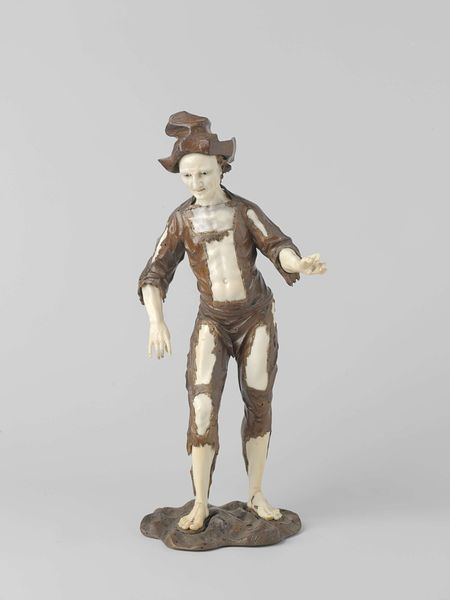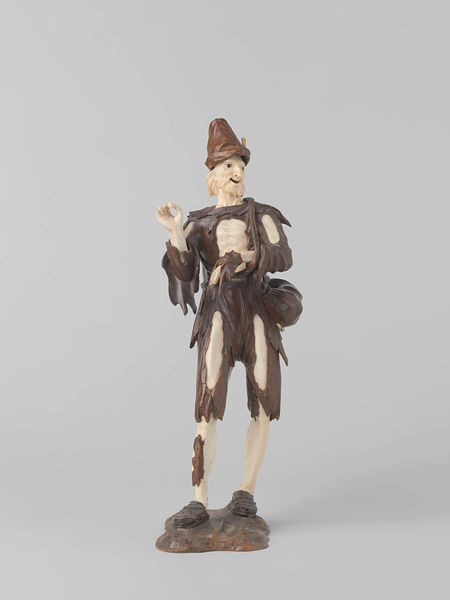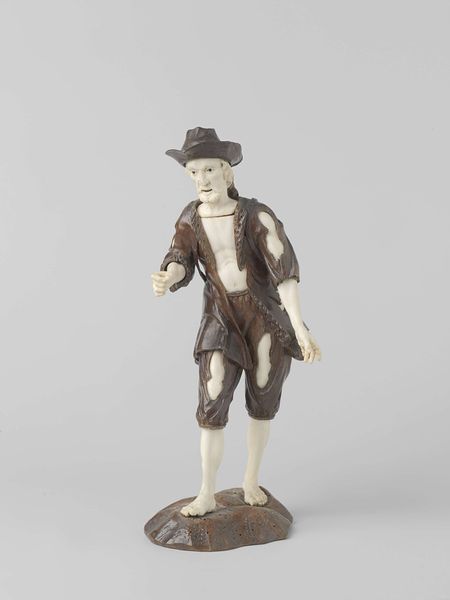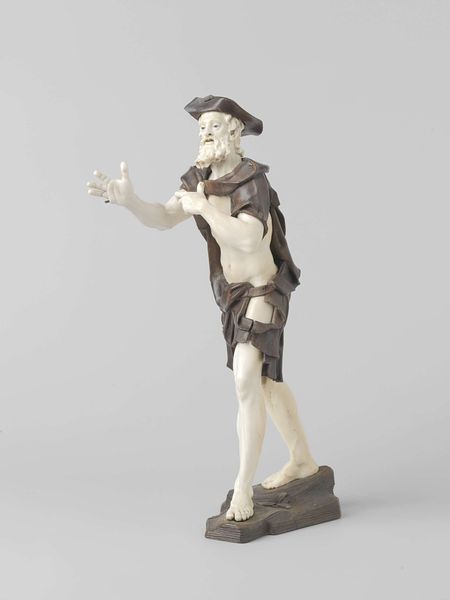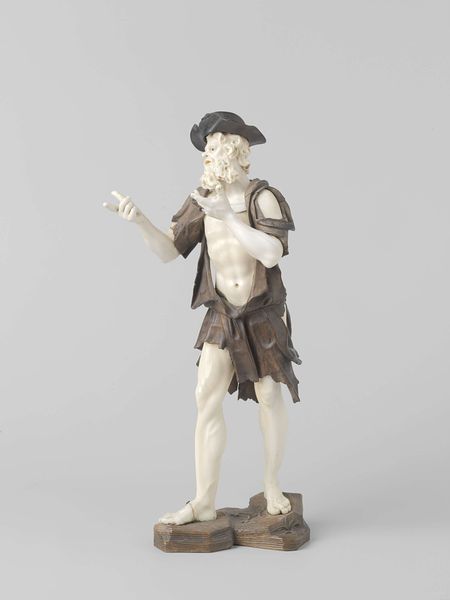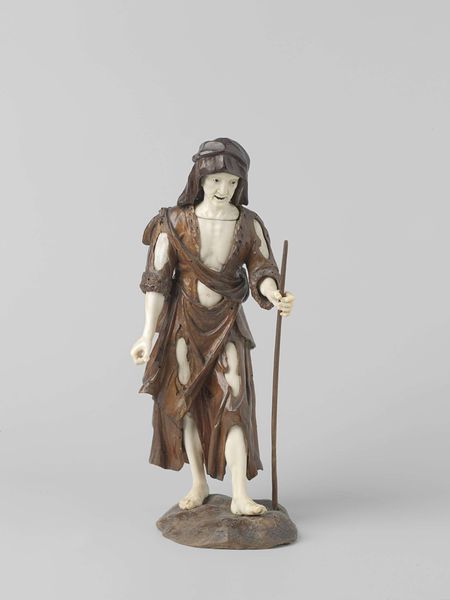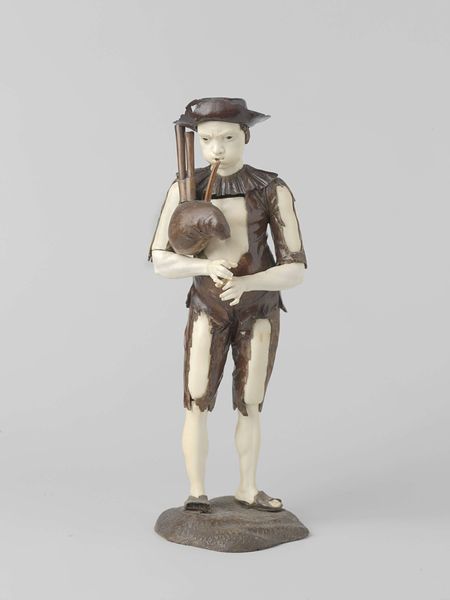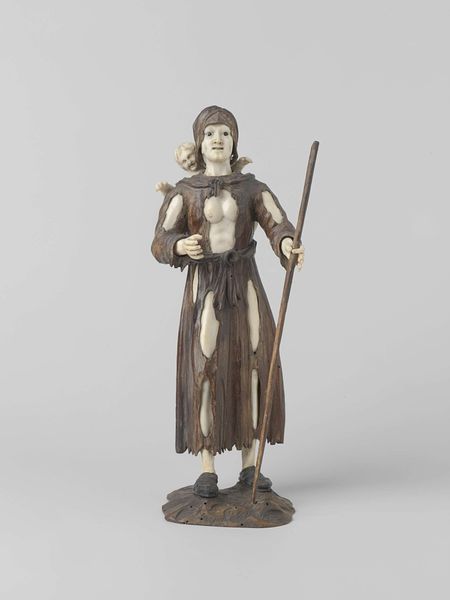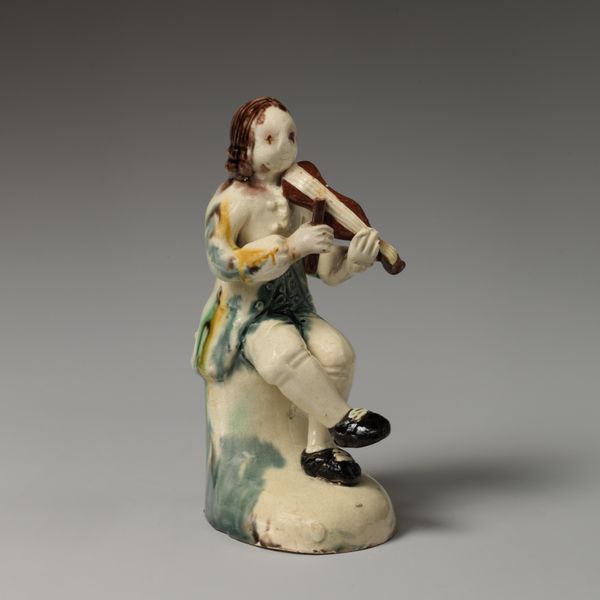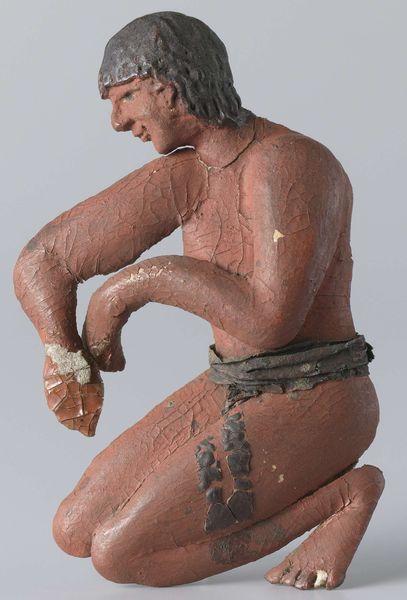
Dimensions: height 34 cm, width 18 cm
Copyright: Rijks Museum: Open Domain
Curator: We're looking at "Bedelende Figuur" or "Begging Figure," a wood sculpture created by Simon Troger sometime before 1768. The work features a standing male figure in what appears to be ragged clothing, leaning on a staff. Editor: My immediate impression is one of stark contrast. The detailed, almost Baroque-like carving, depicting a subject in apparent distress, is quite unsettling. There is a visual tension, wouldn’t you say? Curator: Precisely. Troger's adept manipulation of wood is central to its reading. Observe the textured surfaces juxtaposed with smooth ones – the contrast of the torn garments to the figure's pale skin. He has effectively used carving as a signifier of both wealth, in the skill involved, and poverty, in the depiction of his subject. Editor: Considering its production context, what specific processes do you find compelling in the sculpture's making? Were there aspects related to material procurement, labor divisions, or intended consumption patterns which highlight socio-economic realities that may be invisible at first sight? Curator: That's where it gets truly compelling. Troger elevates what might have been merely genre art to something much more layered through that kind of textural contrast. He forces us to confront material and social difference on a single form, a visual semiotic for inequality, so to speak. The torn rags speak to the difficult labour conditions and to poverty. Editor: The wood itself must be examined; I am fascinated by its grain, how it’s coaxed, resisting yet yielding under Troger’s chisel. This dialogue of artisan and material speaks to labour’s core. Moreover, were such sculptures intended as reflections on existing socio-economic disparities, conversation pieces for wealthier households during the period perhaps? Curator: Exactly, the question then shifts to who these figures were intended for, how the display context shaped meaning. A piece about poverty displayed in an aristocratic setting creates a space of critical engagement, doesn’t it? Editor: It seems this carving becomes an uncomfortable mirror reflecting, quite literally, the materials of inequality back at a privileged class, while inviting the observer to probe our perception about luxury, suffering, craft production as processes themselves entangled. Curator: Indeed, and from a formal perspective, it uses Baroque visual language to make that critique even more poignant. Troger certainly achieves complexity through visual strategies. Editor: The exploration has deepened how I initially received this emotive sculpture; the confluence between carving practice and materials themselves becomes enmeshed into greater socio-economic inquiry. Curator: Agreed, and by delving into structure we've also seen the socioeconomic roots become increasingly palpable.
Comments
No comments
Be the first to comment and join the conversation on the ultimate creative platform.
